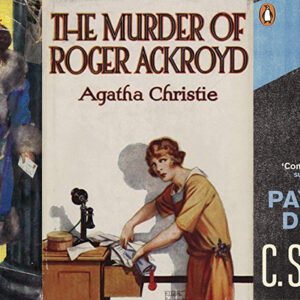When I recommend historical fiction to people, I always feel a bit like Marisa Tomei in My Cousin Vinny talking about being raised in the autoshop: my sister reads historical fiction, my historian father reads historical fiction, my medievalist mother read tons of historical fiction, and also, I know historical fiction very very well. It is in this spirit that I bring to you a list of historical mysteries coming out in 2022 that I think you, dear reader, as someone who also enjoys historical mysteries, will enjoy.
I do have my favorites, so you’ll see World War II settings somewhat over-represented on the list below (although this is partially due to the the proliferation of women-led spy fiction over the past few years). There’s also a strong early-to-mid-19th-century showing, in contrast to the Victorian-heavy depictions we’ve seen from the past few decades of stylishly suffering orphans (although we’ve got some Victorians coming out that look brilliant as well). Lest I waste your attention span on caveats, I’ll let you scroll onwards to the main event—organized in chronological order of setting, because that is how we historical fiction fans read, amiright?
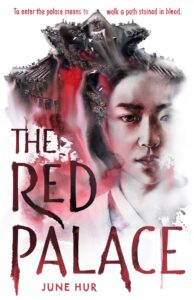
June Hur, The Red Palace
(Feiwel and Friends, January 25)
Setting: Joseon, Korea, 1758
June Hur is a rising star in the world of YA historical thrillers, seamlessly integrating intrigue, romance, and rich detail. Her third novel, The Red Palace, cements her place alongside the best historical writers, as she takes us inside the royal palace from a young nurse’s perspective. One night, several women are murdered in their beds, and it will take all the gumption and cleverness of Hur’s heroine to find out the true culprit behind the killings.
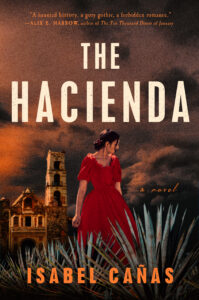
Isabel Cañas, The Hacienda
(Berkley, May 10)
Setting: Just after the Mexican War of Independence
Isabel Cañas takes the gothic novel to the haciendas, just as Silvia Moreno-Garcia’s Mexican Gothic took on the history of silver mining and imperialism. In The Hacienda, set just after the Mexican War for Independence, heroine Beatriz has been dispossessed of her family fortune after her father’s fall from political grace and subsequent execution. She finds a husband she feels will elevate her status and protect her mother from persecution, but strange happenings at her new estate and rumors of hauntings threaten to derail her new life, and a sexy local priest who moonlights as a witch is her only hope of survival. Lush, beautiful, and completely deserving of the comparisons to Rebecca, The Hacienda is essential reading in the gothic revival.
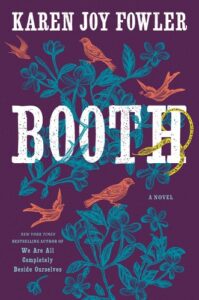
Karen Joy Fowler, Booth
(Putnam, March 8)
Setting: Civil War Period
The one and only time I have ever been to a private club was as a guest to one founded by John Wilkes Booth’s actor brother. But even had I not had that strange, truffle-fry-filled experience, I would not be able to resist Karen Joy Fowler’s richly detailed and darkly imagined version of John Wilkes Booth’s childhood. Along with his nine other siblings, John is alternately terrorized and mentored by his Shakespearean actor of a father, as the nation grows ever closer to war. Intense and epic as only historical fiction can be.

J.M. Miro, Ordinary Monsters
(Flatiron, June 7)
Setting: England, 1882
X-Men meets A League of Extraordinary Gentlemen in J.M. Miro’s imaginative, Victorian-set novel. A strange institute, led by the powerful and mysterious Dr. Berghast, is busy collecting orphans from across the globe, each with their own special powers. But someone else wants the talented children too, and he’s got some Gaiman-level henchmen to help him. Come for the world-building, stay for the badass train fight!

Jenni Fagan, Luckenbooth
(Pegasus, January 4)
Setting: Edinburgh, 1910-2000
Ok maybe it’s just the pandemic, but there’s a new era of great books entirely taking place in apartment buildings, vacation getaways, and fancy hotels, and I am so here for it—if hell is other people, then we can only hope hell is a prewar building with original molding. In Jenni Fagan’s stunning new novel, an apartment building at 10 Luckenbooth Close in Edinburough first is scene to a terrible crime, then witness to all the blazing currents of the 20th century, moving on to explore visions of alternative history and future dystopias. Perfect for those who liked Things in Jars by Jess Kidd.
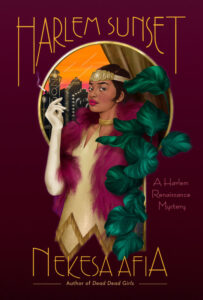
Nekesa Afia, Harlem Sunset
(Berkley, June 28)
Setting: 1920s Harlem
First of all, you should buy this one for the stunning cover alone, but the story inside is just as lush and compelling. Nekesa Afia wowed me with her 1920s-set debut Dead Dead Girls, and now her Jazz-Age heroine Louise Lloyd is in an even tighter spot in the second installment (so far, this series is best read in order). Louise spent much of the first book rescuing several women from a predator, and now in the second, one of those women is dead, and Louise’s partner has been accused of the crime.
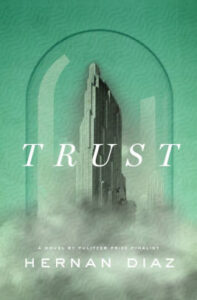
Hernan Diaz, Trust
(Riverhead, May 3)
Setting: New York, 1920s
The brilliant title of Hernan Diaz’s new novel of the stock market refers to not only financial trusts and human trust, but also the trust that a reader has for a manipulative narrator. I’m a huge fan of stories that explore the nature of narrative itself, so I couldn’t resist the structure of this innovative tale. Trust is told first as a memoir by tycoon Benjamin Rask, aimed at setting the record straight after being blamed for the calamitous fall of the stock market in 1929. Next, we hear from several other perspectives, each upturning everything we thought we knew about the previous one, including the perspective of Helen Rask, Benjamin’s enigmatic spouse, known outwardly for her charity but harboring a shocking secret of her own. Trust stands alongside the best of layered fiction, including the Cuban film El Otro Francisco and Gordon MacAlpine’s The Woman with the Blue Pencil (my two personal faves that I will never stop recommending).

Kate Khavari, A Botanist’s Guide to Parties and Poisons
(Crooked Lane, June 7)
Setting: London, 1923
Traditional mystery fiction continues its revival in Kate Khavari’s delightful new novel, in which the excellently-named Saffron Everleigh attends a dinner party hosted by researchers recently returned from the Amazon, and one of the partygoers ends up dead from a blow-dart toxin. In order to rescue her mentor from suspicion, Saffron decides to solve the murder on her own. Perfect for fans of Miss Fisher’s Murder Mysteries!
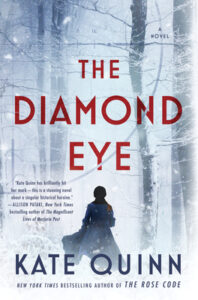
Kate Quinn, The Diamond Eye
(William Morrow, March 29)
Setting: Soviet Union and United States, WWII
Kate Quinn has become one of the biggest names in historical fiction, telling the stories of women’s lives upended by war and transformed by desperate heroism. Her latest takes us into the shell-shocked mind of a Russian sniper who racks up so many kills she’s sent out on a goodwill tour of the US, a blinding contrast to her own destroyed homeland. I don’t trust many Americans to write a truly Russian story, but Kate Quinn is one of the few who can pull it off. It’s also just really nice to care about a Soviet sniper as someone other than Jude Law’s love interest (yeah, I’m talking about you, Enemy at the Gates).

Peter Mann, The Torqued Man
(Harper)
Setting: Fascist Spain and Nazi Germany, WWII
This book is so weird!! And also very good. It is possibly the strangest WWII-set crime novels ever written. Mann alternates between a rollicking, exaggerated shaggy dog story told by an Irish Republican recruited from a Spanish prison to carry out a mission in Berlin, and the reminiscences of a low level Nazi bureaucrat who finds a new courage to resist when he encounters the brass Irishman.
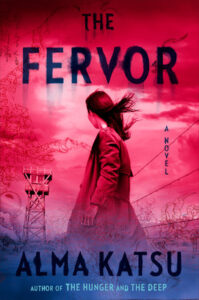
Alma Katsu, The Fervor
(Putnam, April 25)
Setting: Japanese-American Internment Camps, WWII
Alma Katsu’s latest historical horror thriller takes us into the internment camps of WWII, where Meiko Briggs and her daughter Aiko wait for news of her husband at war, and find themselves at the center of a strange new pestilence, and in confrontation with folkloric monsters. No one does historical gothic horror better than Katsu, and I can’t wait to immerse myself in this very creepy tale.

Jacqueline Winspear, A Sunlit Weapon
(Harper, March 22)
Setting: England and United States, WWII
No one writes historical mysteries quite like Jacqueline Winspear, and her latest Maisie Dobbs novel should be a fitting continuation of the series, this one featuring a drop-in from none other than Eleanor Roosevelt (and we all know how good Winspear is at writing strong women with wit and verve). In October of 1942, Dobbs is called in to investigate the deaths of several pilots in what may be linked to a German plan to assassinate the First Lady. Maisie is, of course, more than a match for any of history’s antagonists.
















